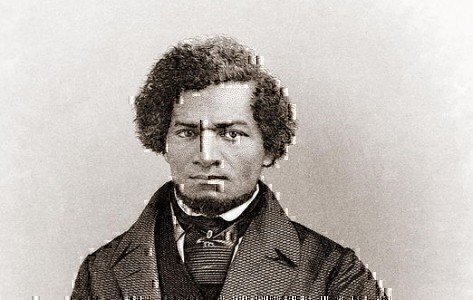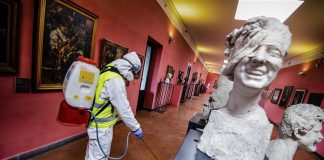On September 3, 1838, abolitionist, journalist, author, and human rights advocate Frederick Douglass made his dramatic escape from slavery—traveling north by train and boat—from Baltimore, through Delaware, to Philadelphia. That same night, he took a train to New York, where he arrived the following morning.
“On Monday, the third day of September, 1838, in accordance with my resolution, I bade farewell to the city of Baltimore, and to that slavery which had been my abhorrence from childhood.”
Born into slavery on a plantation in Tuckahoe, Maryland, circa 1817, he was the son of a black mother and an unidentified white father. He never knew the date of his birth, but celebrated his birthday on February 14 in memory of his mother, who had brought him a heart-shaped cake on the night that he last saw her.
Only a small boy when his mother died, Douglass, born Frederick Bailey, lived with his grandmother in the slave quarters until he was eight years old, when he was “hired out” and sent to work in the home of Hugh Auld. While working for the Auld family in Baltimore, Frederick began to acquire a formal education. Mrs. Auld broke Maryland state law in order to teach the young boy to read, and Frederick later tried to learn all he could from schoolboys he met on the streets of Baltimore.
After an earlier unsuccessful attempt, Frederick escaped from slavery in 1838 by posing as a free sailor wearing a red shirt, a tarpaulin hat, and a black scarf tied loosely around his neck. He boarded a train bound for Philadelphia.
On sped the train, and I was well on my way…when the conductor came into the negro car to collect tickets and examine the papers of his black passengers. This was a critical moment in the drama.
Frederick had to be able to sound, as well as look, like a sailor:
My knowledge of ships and sailor’s talk came much to my assistance, for I knew a ship from stem to stern, and from keelson to cross-trees, and could talk sailor like an ‘old salt.’
Overjoyed at being free when he reached New York City, Frederick immediately had to face feelings of loneliness and fear as a stranger in a strange land. Fortunately, he was soon given assistance by free black abolitionist and activist David Ruggles.
Two weeks after reaching a free state, Douglass married Anna Murray, a free black woman whom he had met in Baltimore. He settled in New Bedford, Massachusetts, where his experience as a ship caulker enabled him to find work on the docks. In New Bedford, Frederick gave a friend the privilege of choosing for him a new name, since he might be sought under the old name as a runaway:
I gave Mr. Johnson the privilege of choosing me a name, but told him he must not take from me the name of “Frederick.” I must hold on to that, to preserve a sense of my identity. Mr. Johnson had just been reading the Lady of the Lake, and at once suggested that my name be “Douglass.”
Three years later, Frederick Douglass began to give lectures on behalf of the Massachusetts Anti-Slavery Society. Douglass wrote Narrative of the Life of Frederick Douglass, an American Slave External in part to refute charges that it was impossible that someone of his accomplishments could have been a slave.
“My Escape from Slavery External,” by Frederick Douglass, was published in November 1881 in The Century Illustrated Magazine. His fully revised autobiography was published as Life and Times of Frederick DouglassExternal, also in 1881. In this section of his revised autobiography, Douglass describes in vivid detail his escape by train from Maryland, where he was legally a slave, north to New York City. Douglass omitted the details of this story from his first autobiography, Narrative of the Life of Frederick Douglass, an American Slave External out of concern for the safety of those who helped him escape and for others still held in slavery.
With proceeds from the Narrative and the aid of money and a press provided by British philanthropists, Frederick Douglass and Martin Delany began in 1847 to edit and publish a newspaper, The North Star, based in Rochester, New York.













